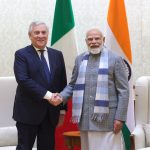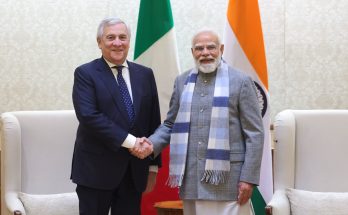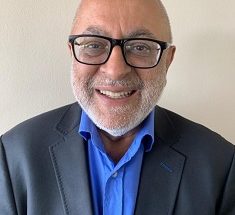It’s the flowering of the Asian dream. Driven by a soaring vision of an arc of prosperity across Asia, the leaders of India and 10 ASEAN countries will sit down for a special two-day summit (Dec 20-Dec 21) in New Delhi to flesh out an ambitious overarching vision of an Asian century.
The summit will mark a new high in India’s Look East policy, launched quietly in the early Nineties, and will celebrate new win-win linkages with this dynamic region, home to tiger economies and cutting-edge innovation and enterprise. The ASEAN-India Commemorative Summit, the first time New Delhi is hosting such a meet, commemorates the 10th anniversary of the summit-level meeting between ASEAN and India, and the 20th anniversary of sectoral dialogue partnership between the two sides.
In a confluence of economic and strategic interests, the leaders of India and ASEAN are expected to unveil an all-embracing vision document that will scale up their relations across a wide spectrum, including trade and investment, security, counter-terrorism, energy, and cultural connectivity.
China will be watching closely this much-touted summit as India deepens its synergies and inter-linkages with the southeast Asian countries which are getting wary of Beijing’s increased assertiveness in the region. India has repeatedly made it clear that the future of the Asian century, were such a vision to fructify, depends on a cooperative equilibrium with China, and not rivalry, as conjured up by the declining and insecure West. There are hawkish voices in China, but the new leadership in Beijing has signalled its keen desire to build harmonious relations with India.
But much to the dislike of Beijing, South China Sea, a prickly issue with China, will be on table when the leaders meet at Taj Palace hotel in the Indian capital. South China Sea, a disputed water body, is thousands of miles away from the Indian capital, but the ripples of nationalistic rivalries will be felt here. The joint declaration is expected to underline freedom of navigation and security of sea lanes of communication – a euphemism that means hegemonistic posturing will simply not do.
The showpiece of the summit is expected to be the formal announcement of an India-ASEAN free trade agreement on services and investment, a defining step that will accelerate India’s engagements with this economically vibrant region. This landmark pact, as Manmohan Singh has said, will be “a springboard for rapid expansion in economic relations” between the two sides.
Nothing illustrates the growing India-ASEAN synergy more than the blossoming of trade, business and investment ties. The free trade agreement in goods, which was sealed in 2009 and became fully operational in August last year, has bore rich fruits. Bilateral trade has breached the target and has spiralled to $80 billion. The two sides have set a target of $100 billion by 2015.
The ASEAN-India trade has been growing over 22 per cent during the last six years. Since the signing of the ASEAN-India trade in goods agreement in 2009 and its implementation since last year, bilateral during 2011-12 has increased by more than 37 per cent.
The commemorative summit builds upon the successful India-ASEAN summit held in the Cambodian capital Phnom Penh Nov 18-20.
At the Cambodia summit, India pitched for closer economic integration and connectivity as the twin focus areas that have the potential to transform the interlinked destinies of countries in the region. Phnom Penh, the historic and charming Cambodian capital, has a special resonance as it was here that India held its first summit with the ASEAN and began a win-win journey that is crossing new milestones every year. “As we gather for our tenth summit in the country that hosted the first such summit, let me reaffirm that India attaches the highest strategic priority to its relations with ASEAN,” Manmohan Singh told ASEAN leaders at the summit. Conjuring up a robust vision of a resurgent Asia and the larger region, what he has famously enunciated as an arc of prosperity, the prime minister said: “A future of peace, stability and prosperity in the Asia Pacific requires increased cooperation and integration in the region. ASEAN has shown the way in this regard.” He pitched for the ASEAN’s centrality in the ongoing project of renaissance and renewal in the region. “We support the objectives of an ASEAN Community by 2015, the Initiative for ASEAN Integration and the ASEAN Master Plan on Connectivity,” he said, encapsulating the three pillars that underpin the future of India-ASEAN cooperation.
Connectivity, physical, institutional, mental and spiritual, was the reigning mantra and the way to go. A web of rail, road and sea links has the potential to integrate India’s 1.2 billion population, with its overwhelmingly young workforce, with Asean’s 600 million people and entwine the region that boasts the combined GDP of $3 trillion. The dream of a road trip from India to Bangkok and onwards is inching incrementally to fruition. The summit saw the leaders pushing the showpiece project of the Trilateral Highway linking Thailand and Myanmar with India, also called the Friendship Road. India has built a major chunk of its stretch of the 1,400 km Trilateral Highway, which seeks to connect Moreh in Manipur, northeast India, to Mae Sot in Thailand. The proposed new highway is expected to be completed by 2016.
Increased connectivity seeks to position people at the heart of this burgeoning relationship. The Cambodia summit gave a thumbs-up to a host of initiatives India has undertaken in the run-up to the commemorative summit that promises to connect the hearts and minds of nearly 2 billion people of the two regions. A car rally has already kicked off off from Yogakarta in Indonesia and will finally end in India’s northeast. INS Sudarshini, an Indian naval ship, is docking at ports of the Asean countries, reviving and building on an ancient sea route link with the region.
Moving beyond commerce and connectivity, India has also firmed up a multi-faceted strategic partnership with the ASEAN. The growing engagement in areas such as defence, maritime security and counter-terrorism bear testament to a relationship that has acquired greater strategic heft.
This identity of perspectives and shared imperatives was also reflected in the 18-nation East Asia Summit, an evolving forum that is emerging as a premier institution for crafting an open, balanced and inclusive security architecture in the region. In this context, India made it clear that in view of proliferation of other regional groupings like the ARF, India sees ASEAN as “the bridge to the East.” “We can create an open, balanced, inclusive and rule-based architecture in the region for our collective security, stability and prosperity,” said Manmohan Singh. Building upon its closer engagement with ASEAN, India has pitched for greater economic integration with the larger EAS region that also includes the US and Russia. Speaking at the EAS summit, the prime minister welcomed the launch of the Regional Comprehensive Economic Partnership negotiations.
These are substantive achievements aimed at weaving a web of peace and prosperity in the region. The best is, however, yet to come, as Manmohan Singh said memorably in Phnom Penh after his meeting with Sultan Hassanal Bolkiah of Brunei, which is to take over as chair of the Asean for 2013.
Author Profile

- Manish Chand is Founder and Editor-in-Chief of India Writes Network (www.indiawrites.org) and India and World, a pioneering magazine focused on international affairs. He is CEO, Centre for Global India Insights, an India-based think tank focused on global affairs.
Latest entries
 India and the WorldDecember 12, 2025India-Italy bonding: Tajani’s visit raises the bar for business, maritime ties
India and the WorldDecember 12, 2025India-Italy bonding: Tajani’s visit raises the bar for business, maritime ties In ConversationNovember 26, 2025G20 is a Force for global Good
In ConversationNovember 26, 2025G20 is a Force for global Good articlesNovember 26, 2025Rescuing G20 from North-South divide: Ubuntu Moment
articlesNovember 26, 2025Rescuing G20 from North-South divide: Ubuntu Moment India and the WorldOctober 27, 2025Modi hails the century of India and ASEAN, backs ASEAN centrality
India and the WorldOctober 27, 2025Modi hails the century of India and ASEAN, backs ASEAN centrality







